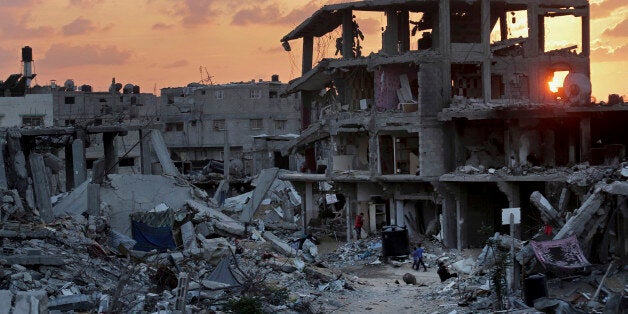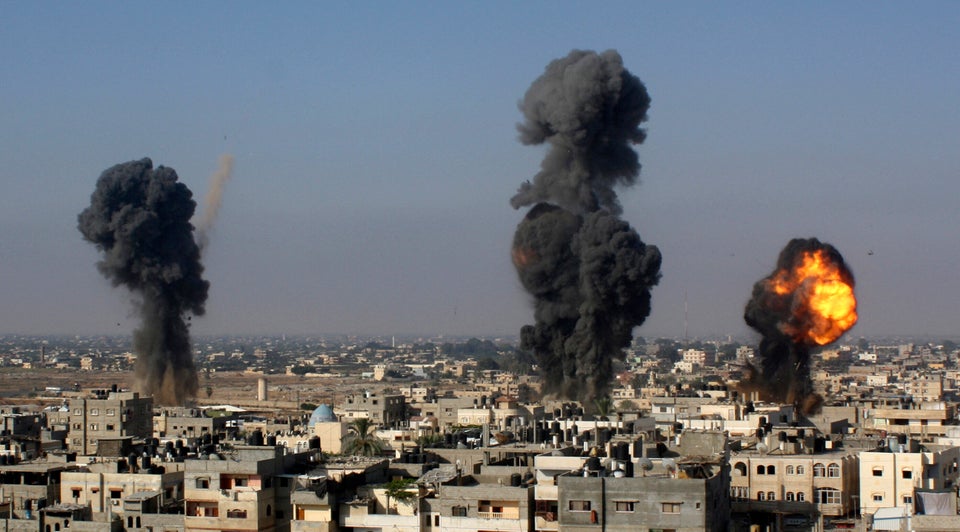
Every week, The WorldPost asks an expert to shed light on a topic driving headlines around the world. Today, we look at efforts to rebuild the Gaza Strip after the latest conflict with Israel.
For 51 days this summer, Israeli troops and Palestinian militants in Gaza fought a devastating war that left over 2,100 Palestinians and 70 Israelis dead. The United Nations estimates that 60,000 homes in Gaza were damaged or destroyed in the fighting, leaving some 110,000 people homeless. Infrastructure in the enclave was badly damaged.
As another 50 days have passed since the end of the war, the need to start Gaza's reconstruction process is growing more acute. Last weekend, international donors gathered in Cairo and pledged $5.4 billion to rebuild the Strip.
A major challenge for donors and aid agencies is to make sure the cash translates into actual rebuilding. Gaza's neighbors -- Israel and Egypt -- severely restrict the passage of goods in and out of the area. Israel has insisted on guarantees from the international community that construction materials won't be used by militants to resupply for another war. In a potential breakthrough last month, the UN brokered a deal for international monitoring on reconstruction materials imported into Gaza. On Tuesday, the first trucks carrying building materials were allowed to enter the enclave via Israel.
The WorldPost turned to Tony Laurance, CEO of U.K.-based charity Medical Aid for Palestinians, to discuss the reconstruction effort and the scale of the challenges ahead.
It's been nearly two months since Israel and Palestinians in Gaza reached a ceasefire deal. Has the rebuilding of Gaza started yet?
Not in any meaningful sense. At the moment they’re mainly clearing unexploded ordnance. People were waiting for the Cairo donor conference and on an agreement on how materials will get into the enclave to start the rebuilding process. Substantial amounts were indeed pledged during the conference. However, after the last confrontation, Operation Cast Lead in 2008-2009, there were also a lot of pledges but nothing was delivered. While the agreement reached by the United Nations on the entry of goods into Gaza is promising, there have been many promises over the last five years to resolve that same problem. Nothing ever happened in a very wide scale.
Will it be different this time?
The UN deal will need to be accompanied by enormous intentions. The challenges lie in the details and the success of the deal depends on relationships and trust, which are very sorely absent. Israeli-Palestinian relations don’t really exist at the moment.
Will the promised aid be enough, if it does arrive?
Getting the materials in is one thing. There are very complicated projects ahead -- like repairing the water, sewage and power systems -- which not only require goods entering Gaza but also expertise and equipment.
Additionally, unless you create opportunities for export you cannot get the economy running again. One-off aid may help kickstart the economy but it won’t create longer term opportunities or jobs.
Where does that leave people in Gaza in the meantime?
People aren’t starving, but that's about the best you can say. Many are not able to go home, many don’t have electricity.
There’s an awful lot of people with injuries. Gaza will need to cope with people who have severe disabilities, offering physical therapy and finding opportunities for them. The medical equipment was already pretty dire, even before the war, and now there is an acute shortage of drugs. A number of clinics and hospitals were damaged and a few were destroyed in the war.
There are also wide concerns about the water supply and associated public health risks. The one public aquifer is desperately overused and a lot of people can’t afford to live off water tanks. It's crucial to act so that Gaza has an adequate water system in the coming years. There have been plans to invest in the sewage system, for years but they never got off the ground. At the moment the sewage is just pumped into the sea.
This interview took place on Thursday, Oct. 16. It has been edited and condensed for clarity.

